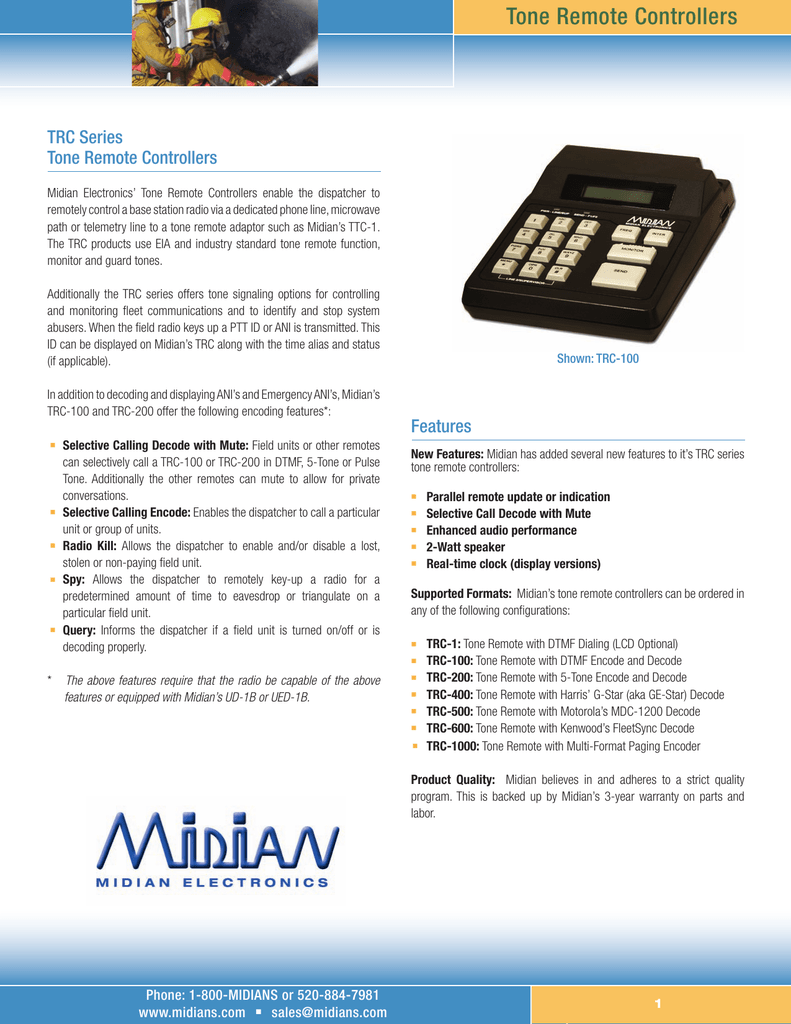Back in the late 1960's Lafayette Radio produced many C.B. Radios that had Selective Calling. There was a socket type jack on the rear of the radio. You had to purchase a seperate small box that plugged into the jack to encode and decode the selective call feature. Transmitting tone 'T' will open the repeater, ctcss opens the radio for selective squelch based on ctss tone chosen. 73s happy holidays AE5RU P.S. Pressing the tone button will cycle through the tone options, 'T' 'ctcss' or no indicator. A single selective call consists of a combination of four pre-selected audio tones whose transmission requires approximately 2 seconds. The tones are generated in the aeronautical station coder and are received by a decoder connected to the audio output of the airborne receiver.

- Documentation
- Design resources
Product description

The CMX823 is a high performance, low power, audio tone decoder that can operate on low S/N signals.
Each decoded tone frequency is user-defined to provide the flexibility to operate in a variety of paging, two-way radio and proprietary systems.
Example systems and tones include: Motorola Quick Call series; GE groups A, B and Zetron, Reach and Plectron 2-tone radio paging; Motorola 5/6-tone paging; and the EIA, CCIR, ZVEI1 and EEA tonesets used for HSC radio paging and selcall.
Up to 32 user-defined decode tone frequencies from 280Hz to 3500Hz are written to an internal RAM-based FIFO. (Two separate 32-tone FIFOs are provided and support fast switching between tone sets).
Each programmed tone (entry in the list) is user-assigned to one of two (or both) tone groups. Two-tone sequence decoding is simplified by dynamically enabling one or the other tone group via a mode selection.
The CMX823 asserts an interrupt on tone decoding state transitions, e.g. notone to decoded tone, decoded tone to notone, etc. STATUS and DECODED TONE PARAMETERS Registers may then be read and indicate the decoder status, the target tone decoded and its tone group.
Devices are available through our distributors below:
Datasheets
- CMX823 Datasheet (rev3)
Technical Portal
No additional information available.
Features

- Decodes 32 User-Programmed Tones
- Stores Two Lists of 32 Tones to Fast-Switch Between Tone Sets
- Configurable Decode Response-Time and Decode Bandwidths
- Low Power: 0.75mA at 2.7V and ‘Zero-Power’ Powersave Mode
- Superior Signal-to-Noise Performance
- Low-Cost 3.58MHz Xtal/Clock
Applications
- Two-Tone, 5/6 Tone and Voice Pagers
- Selective Calling (Selcall) Systems
- Wireless Local Loop Signalling
- Voice Pager Switching and Signalling
- Revertive Paging Systems
- Audio Tone Signalling Applications

Power supply requirement
- 2.7 V
Not quite sure what you’re looking for?
We can tailor an existing product to your unique requirements
Design resources
CMX823 FAQ
Q. I am considering migrating from the CMX813 to the CMX823, to take advantage of it programmable tone table, can you help me understand the differences between these two devices
A. The CMX823 should be considered to be an enhanced CMX813, in that it is pin, package and virtually function compatible. The CMX823 takes the excellent CMX813 and adds full tone programmability so that user tone sets are now possible, enhanced S/N tone detection performance and improved tone resolution and accuracy. In terms of hardware it is a plug and play solution.
In Software there are two additional registers to be made aware of and some differences in existing Registers, the following table identifies which registers differ. For more detail on the register specifics please refer to the respective data sheets.
| Write Registers | |||
| Register Names | CMX813 | CMX823 | |
| $01 | General Reset | Compatible | |
| $30 | Control | Not Compatible | |
| $31 | Tone Address | OK | N/A |
| $32 | Auxiliary Control | N/A | OK |
| $33 | General Control | N/A | OK |
| Read Registers | |||
| $38 | Decoded Tone Address | Not Compatible | |
| $3F | Status | Not Compatible | |
Q. I need a replacement for the xX307. What should I use?
A. The xX307 was a receiver IC that utilized external components to program the center frequencies and detection bandwidths of three sequential tones from 200Hz-3000Hz. While there is no pin-compatible replacement for the xX307, the CMX823 is the most cost-effective device that can perform the functions of the xX307. Please be aware that there are many differences between these two devices, most notable being the fact that the CMX823 requires a microcontroller while the xX307 did not.
Q. Do you have a calculator available to work out the hex values to be programmed into the Tone Parameters Register ($34)?
A. Yes – There is an Excel spreadsheet available to calculate values for the Tone Parameters Register ($34) in the CMX823 Tone Parameters Register Calculator [updated November 2007].
Note: The Excel Add-in, ‘Analysis ToolPak’ must be loaded to use the spreadsheet. Please see the Excel help for help on loading Add-Ins.
Q. I have noticed that in some of the 2 tone or 5/6 tone decode sequences the TONE CHANGE bit ($3F b5) is not set between the first and second received tones, do you have any advice?
Selective Call Tone Decoder Software
A. It is important to appreciate the note in section 1.5 of the CMX823 datasheet that states:
RAM location 0 is reserved for programming the 1st tone of a 2-tone or 5/6 tone sequence.
This is intended to stop the possibility that a second tone is written to the first location, this may in some circumstances cause the failure of the TONE CHANGE bit being set correctly. It is sensible to avoid writing a valid tone to the first RAM location 0 if at all possible.
Another recommendation for users who receive concatenated 2 or 5/6 tone sequences is to set the CMX823 to a NOTONE state between success sequences. This will avoid possible false readings of the TONE CHANGE bit.
Selective Call Tone Decoder Free
Guides to operation and interfacing